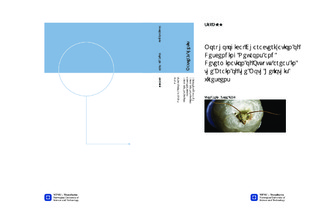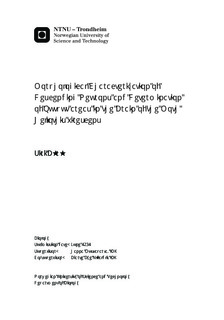| dc.contributor.advisor | Mustaparta, Hanna | nb_NO |
| dc.contributor.advisor | Bye Løfaldli, Bjarte | nb_NO |
| dc.contributor.author | Børø, Siri | nb_NO |
| dc.date.accessioned | 2014-12-19T13:12:37Z | |
| dc.date.available | 2014-12-19T13:12:37Z | |
| dc.date.created | 2012-11-08 | nb_NO |
| dc.date.issued | 2012 | nb_NO |
| dc.identifier | 566420 | nb_NO |
| dc.identifier | ntnudaim:6807 | nb_NO |
| dc.identifier.uri | http://hdl.handle.net/11250/245069 | |
| dc.description.abstract | Knowledge on how an insect s behavior changes in response to chemical substances in the environment can ultimately contribute to the development of biologically harmless pest controls. One of the links between sensory processing systems in the brain and motoric output is thought to be the neurons mediating the pre-processed information from the brain to act on motor circuits in the ganglia of insects. In the present study, the noctuid moth Heliothis virescens was the insect of study, and the thoracic ganglion of in total 88 preparations was stained with fluorescent dye to systematically study the descending neurons mediating information out of their brains. Performing mass-staining of the thoracic ganglion have contributed to knowledge on the areas where these neurons originates or projects. Visualizing the stained neurons in a confocal microscope showed condensed staining of dendrites of descending neurons in the anterior-ventral part of the lateral protocerebrum and in the lateral accessory lobes. Knowing that processing of chemosensory information might result in activities of behavioral relevance, it was especially interesting to see whether projection neurons making up the olfactory axis in the lateral protocerebrum overlapped spatially with dendrites of descending neurons eventually terminating in motor systems in the thoracic ganglia. Double staining of both the antennal lobe and the thoracic ganglion were therefore performed in the same individual, in 31 preparations. Three dimensional reconstruction and registration of descending neurons into the digital standard brain atlas (SBA) of H.virescens supported the spatial position of descending neurons in the anterior-ventral part of the lateral protocerebrum. The SBA containing the descending neurons was visually compared to a separate SBA containing the olfactory axis in the lateral protocerebrum, indicating no or minimal spatial overlap between the olfactory axis and the dendrites of descending neurons. This highlights the need for a detailed examination to discover if sensory information can be transferred to motor systems via 3rd order neurons local to the protocerebrum. | nb_NO |
| dc.language | eng | nb_NO |
| dc.publisher | Institutt for biologi | nb_NO |
| dc.subject | ntnudaim:6807 | no_NO |
| dc.subject | MBI Biologi | no_NO |
| dc.subject | Fysiologi | no_NO |
| dc.title | Morphological Characterization of Descending Neurons and Determination of Output areas in the Brain of the Moth Heliothis virescens | nb_NO |
| dc.type | Master thesis | nb_NO |
| dc.source.pagenumber | 60 | nb_NO |
| dc.contributor.department | Norges teknisk-naturvitenskapelige universitet, Fakultet for naturvitenskap og teknologi, Institutt for biologi | nb_NO |

